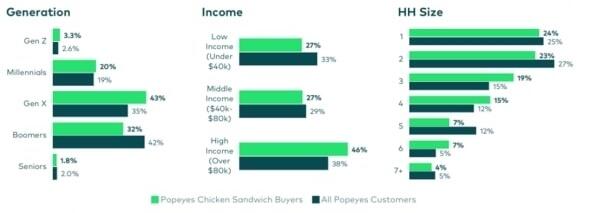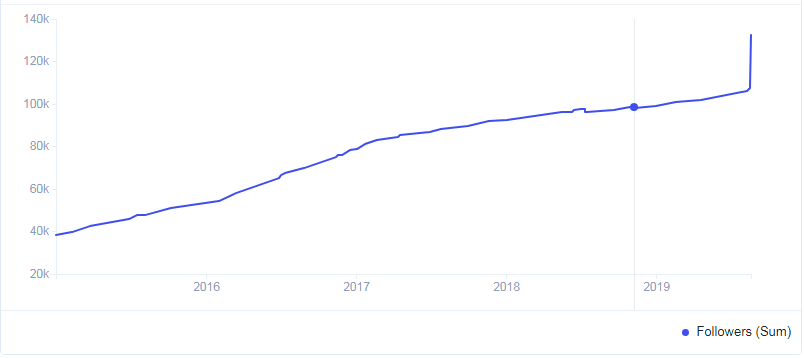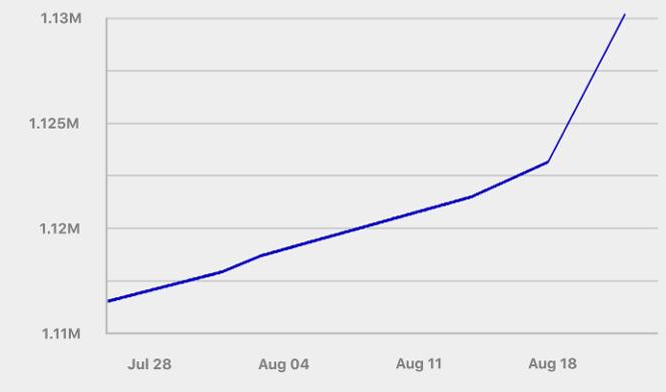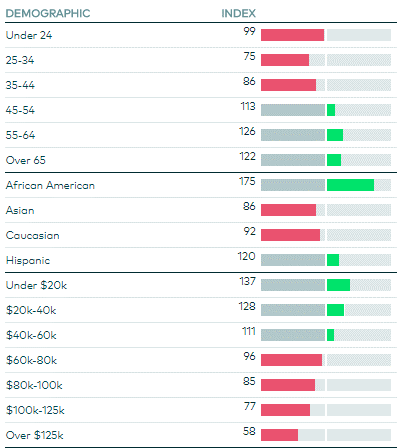The utilization of proper marketing strategies is crucial for a business environment as it ensures the growth of profits, increases the market share of an organization, and strengthens brand awareness. The marketing phenomenon, which occurred when Popeye’s Chicken introduced a new spicy sandwich, can serve as an excellent example of the utilization of the right strategy by a company. As a result of the creation of a new product, Popeye’s Chicken managed to gain more than $65 million of net revenue. Social media played a significant role in the development of the popularity of the restaurant and its new product (Marino 2). In this paper, a summary of the Chicken Sandwich War situation and a marketing strategy for the future of Kentucky Fried Chicken (KFC) will be provided.
The Chicken Sandwich War started in 2018 when a range of fast-food restaurants, such as McDonald’s, Buffalo Wild Wings, Wendy’s, and others, decided to take part in the contest. The idea of the competition was to make a chicken sandwich, which would be better than sandwiches produced by Chick-fil-A, the leader of the fast-food industry in the USA (Taylor). The winner of the contest was Popeye’s Chicken, which created spicy sandwiches and sold them out within two weeks. The Popeye’s chicken sandwich buyer demographics, presented in appendix A, show that many buyers purchase the newly introduced sandwiches as an addition to other items from the menu.
The most crucial factor that defined the popularity of the product is the social media campaign introduced by the company. Popeye’s Chicken increased its presence on Facebook and Twitter by getting in touch with its customers through online networking platforms. As a result, the number of geotagged posts on Facebook made by people located in the restaurant and the number of followers of the company’s Twitter account were significantly increased (Marino 2).
This information is reflected in the graphs presented in appendix B. In general, the tactic, combined with publicity and the appeal of the product, raised the sales of Popeyes restaurants by 10.2% during the third quarter of the year (Patel). Therefore, it can be suggested that the utilization of social media is one of the best strategies for a company, which increases its market share, profits, and brand awareness.
As for KFC, several primary goals should be pursued by the restaurant. First of all, it is necessary to increase the market share of the company as it has declined in the last decade. In addition, the restaurant has to respond to the emerging trend related to chicken sandwiches to compete with the other fast-food restaurants. To select a proper strategy that would help to achieve the goals of the company, KFC should analyze the demographic data and reveal its target audience. Thus, according to the information presented in the table “Demographics of KFC” (Appendix C), the products of the restaurant are mostly popular among those who are older than 45.
Therefore, to increase the market share of the company, it is necessary to concentrate on the needs and preferences of individuals who are under 45 years old. They represent the target market, which defines the strategy that should be used for KFC’s future.
Taking into account the goals of the company and its target market, it can be suggested that the best strategy for KFC is engagement with customers combined with innovations. Nowadays, the most convenient and effective way to engage with buyers is through the utilization of social media. Thus, the development of the company’s presence in networking platforms will enable KFC to stay in touch with customers and learn about their needs.
Moreover, social media in marketing serves as a platform for introducing new ideas, products, commercials, and promotions for buyers. In addition, online networking will help the company to reach its target audience, as the majority of young people tend to use social media. In general, almost half of the global population actively uses social media websites, which makes a massive audience available for interaction (Appel et al.). The example of Popeye’s Chicken also proves the effectiveness of the engagement with customers through the internet.
It is also necessary to maintain the interest of the gathered audience through the invention of new menu items. According to the “Demographics of KFC” (appendix C), the restaurant is less popular among Asians and Caucasians than among African Americans and Hispanics. To change this situation, it can be beneficial for the company to introduce a new line of products with the elements of Asian or Caucasian cuisine.
For example, KFC could use a unique recipe of pita, which is used for wrapped sandwiches. It could be baked with additional ingredients added to the dough, such as onion, pieces of olives, tomatoes, and spices. This approach would enable the company to increase its market share through the attraction of new customers. In addition, the invention of new types of pitas would be a great response to the trend related to chicken sandwiches.
The implementation of the strategy should be followed by the analysis of its results. Thus, the company should conduct a quantitative analysis to see if there are any positive changes in terms of the increase in the number of customers. Also, KFC has to conduct qualitative analysis and gather customers’ feedback and suggestions about the new menu items. Social media can serve as an excellent tool for collecting all the necessary information, which is needed for the completion of the analysis. Qualitative and quantitative data will help to compare the situation before and after the implementation of the strategy and reveal its impact.
For the implementation of the strategy and the analysis of its effect, two types of resources are needed, namely, technological and human. Technological resources will help to count and sort a large amount of data automatically, which saves time. Human resources will enable the company to implement the strategy in practice and reveal its effectiveness. In general, it is necessary to try new strategies unless KFC can find the most effective one. The option “do nothing” does not work as it may lead to the loss of customers and the inability of the company to stay competitive in the market.
Therefore, it can be concluded that the strategy, which is recommended for KFC, is based on the engagement of customers and innovations. The tactic is suggested by the KFC demographic data and its target market, which represents the population under 45 years old. It aims to achieve the main goals of the company, namely, the increase in its market share and provision of an appropriate response to the new emerging trends in the fast-food industry.
Works Cited
Appel, Gil, et al. “The Future of Social Media in Marketing.” Journal of the Academy of Marketing Science, 2019. Web.
“Facebook ‘Were Here’ Count.” Thinknum Alternative Data, 2019. Web.
“KFC Demographics.” Numerator Retailer Snapshot, 2019. Web.
Marino, Jon. “Popeye’s is the Winner of the Fried Chicken Twitter War.” Forbes. 2019.
Patel, Sahil. “A Chicken Sandwich Gives Popeyes and Burger King Latest Reason to Beef Up Digital Marketing.” The Wall Street Journal. 2019.
“Popeye’s Chicken Sandwich Buyer Demographics.” Numerator Retailer Snapshot, 2019. Web.
“Popeye’s Twitter Followers.” Thinknum Alternative Data, 2019.
Taylor, Kate. “Social-Media Battles, Massive Crowds, and Overworked Employees: Inside the Rise and Fall of Popeyes’ Chicken Sandwich.” Business Insider. 2019.
Appendix A
Popeye’s Chicken Sandwich Buyer Demographics

Appendix B
Popeye’s Twitter Followers Dynamic

Popeye’s Facebook Postings Dynamic

Appendix C
Demographics of KFC
